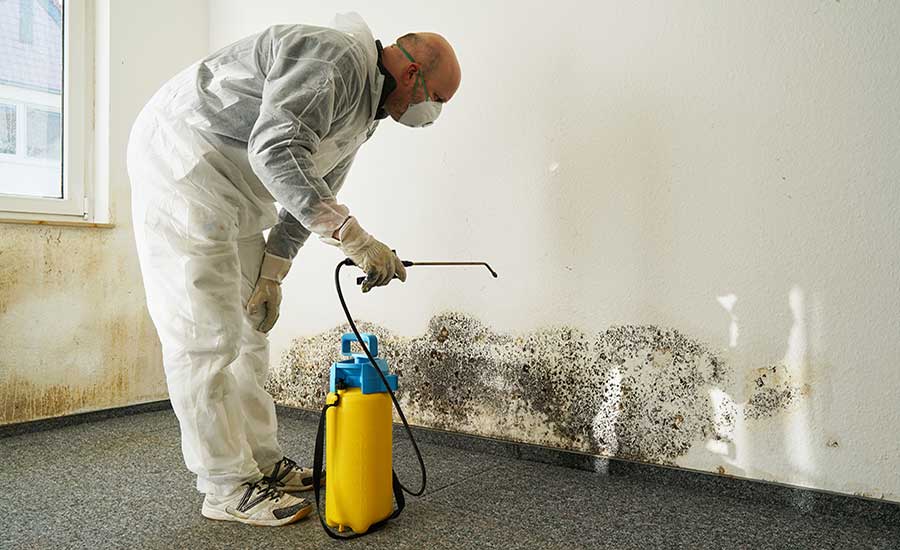What Gets Rid of Black Mold?
Concerned about black mold in your home? Black mold can pose serious health risks if left untreated. Learn how to effectively remove black mold, protect your home, and safeguard your family’s health with expert solutions.

What is Black Mold?
Black mold, scientifically known as Stachybotrys chartarum, is a type of fungus that grows in damp, humid environments. It’s often found in areas with water damage, leaks, or high humidity levels. Known for its dark green or black color, black mold is notorious for its potential to cause respiratory issues and allergic reactions.
Health Risks of Black Mold Exposure
Exposure to black mold can lead to a variety of health problems, especially for individuals with asthma, allergies, or weakened immune systems. Symptoms may include:
- Chronic coughing and sneezing
- Irritated eyes, throat, and skin
- Fatigue and headaches
- Severe respiratory issues in more extreme cases

For this reason, removing black mold from your home as soon as possible is essential for maintaining a healthy environment.
Steps to Get Rid of Black Mold
Removing black mold requires a thorough process that addresses both the mold itself and the source of moisture causing it. Here’s how to effectively get rid of black mold:
1. Identify the Source of Moisture
Mold thrives in moist environments, so the first step in removing black mold is to address the underlying moisture problem. Check for leaks in roofs, windows, or plumbing, and repair them immediately to prevent further mold growth.
2. Wear Protective Gear
Before handling black mold, it’s crucial to protect yourself from exposure. Wear gloves, a face mask (N95 is recommended), and goggles to avoid breathing in mold spores or coming into contact with mold-infested surfaces.

3. Contain the Area
Seal off the affected area to prevent mold spores from spreading to other parts of your home. Close doors, use plastic sheeting to cover doorways, and turn off any ventilation systems that could circulate spores throughout the house.
4. Clean the Mold-Infested Surfaces
Use a mixture of household products to clean surfaces affected by black mold. Here are some common solutions:
- Bleach: Mix one cup of bleach with one gallon of water. Apply the solution to the moldy area, let it sit for 10 minutes, and then scrub with a brush. Rinse with water and dry the surface.
- Vinegar: Undiluted white vinegar is a natural mold killer. Spray it directly on the moldy surface, let it sit for an hour, and wipe it clean with a damp cloth.
- Baking Soda: For a gentler option, mix baking soda with water to form a paste. Apply the paste to the mold, scrub, and then rinse with water.
For porous materials like drywall, carpet, or ceiling tiles, it’s often best to remove and replace the material if mold has deeply penetrated.
5. Dry the Area Completely
After cleaning, use dehumidifiers, fans, or ventilation to thoroughly dry the area. Mold can regrow in just 24-48 hours if moisture isn’t eliminated, so ensure all surfaces are completely dry.

6. Prevent Future Mold Growth
To prevent black mold from returning, control the humidity levels in your home by using dehumidifiers, repairing leaks, and ensuring good ventilation in moisture-prone areas like bathrooms, kitchens, and basements.
When to Call a Professional Mold Remediation Service
While minor mold problems can often be handled with DIY methods, large-scale black mold infestations require professional intervention. If the mold covers an area larger than 10 square feet or if you suspect hidden mold in your walls or HVAC system, it’s time to call a mold remediation expert.
Professional mold remediation services use specialized equipment and techniques to thoroughly remove mold and prevent it from spreading or returning. For expert black mold removal, contact our mold remediation specialists today.
FAQ
- What kills black mold instantly?
- Bleach and undiluted white vinegar are effective at killing black mold on hard surfaces. However, addressing the underlying moisture issue is essential to prevent regrowth.
- Can I remove black mold myself?
- For small areas of mold, DIY methods using bleach, vinegar, or baking soda can be effective. However, for larger infestations, professional mold remediation is recommended to ensure safety and thorough removal.
- How do professionals remove black mold?
- Professionals use specialized equipment, including HEPA vacuums and air scrubbers, to contain and remove mold safely. They also address the source of moisture to prevent future mold growth.
- Can black mold make you sick?
- Yes, prolonged exposure to black mold can cause respiratory issues, allergic reactions, and other health problems, particularly in individuals with pre-existing conditions like asthma or weakened immune systems.
- How can I prevent black mold from coming back?
- Controlling moisture is key to preventing black mold. Repair leaks, improve ventilation, and use dehumidifiers in areas prone to dampness like bathrooms and basements.
Don’t wait until mold spreads—schedule your black mold inspection and removal service today.

